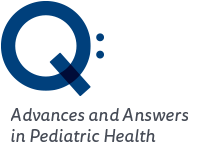- Doctors & Departments
-
Conditions & Advice
- Overview
- Conditions and Symptoms
- Symptom Checker
- Parent Resources
- The Connection Journey
- Calm A Crying Baby
- Sports Articles
- Dosage Tables
- Baby Guide
-
Your Visit
- Overview
- Prepare for Your Visit
- Your Overnight Stay
- Send a Cheer Card
- Family and Patient Resources
- Patient Cost Estimate
- Insurance and Financial Resources
- Online Bill Pay
- Medical Records
- Policies and Procedures
- We Ask Because We Care
Click to find the locations nearest youFind locations by region
See all locations -
Community
- Overview
- Addressing the Youth Mental Health Crisis
- Calendar of Events
- Child Health Advocacy
- Community Health
- Community Partners
- Corporate Relations
- Global Health
- Patient Advocacy
- Patient Stories
- Pediatric Affiliations
- Support Children’s Colorado
- Specialty Outreach Clinics
Your Support Matters
Upcoming Events
Colorado Hospitals Substance Exposed Newborn Quality Improvement Collaborative CHoSEN Conference (Hybrid)
Monday, April 29, 2024The CHoSEN Collaborative is an effort to increase consistency in...
-
Research & Innovation
- Overview
- Pediatric Clinical Trials
- Q: Pediatric Health Advances
- Discoveries and Milestones
- Training and Internships
- Academic Affiliation
- Investigator Resources
- Funding Opportunities
- Center For Innovation
- Support Our Research
- Research Areas

It starts with a Q:
For the latest cutting-edge research, innovative collaborations and remarkable discoveries in child health, read stories from across all our areas of study in Q: Advances and Answers in Pediatric Health.


Vascular Anomalies We Treat
Our multidisciplinary team collaborates with a range of medical experts to pioneer new and effective ways of treating vascular anomalies.
At the Vascular Anomalies Center, we diagnose and treat vascular anomalies of all kinds, including vascular tumors and vascular malformations. Based on our diagnosis, the location of your child’s vascular anomaly, and how it affects bodily function, we put together a multidisciplinary team of medical specialists just for your child. Our comprehensive approach helps us formulate a treatment plan that best fits your child’s development and ensures we address every concern you, your family or your child may have.
Vascular tumors
- Infantile hemangioma: a benign (noncancerous) vascular tumor that forms during infancy. It often does not require treatment, but if it’s in a troublesome area, we can treat it with medication to make it go away faster.
- Congenital hemangioma: a benign (noncancerous) vascular tumor that, different from an infantile hemangioma, it is fully formed at birth., Our team will diagnose them and provide treatment options.
- Kaposiform hemangioendothelioma (KHE): a rare, noncancerous vascular tumor that can uniquely invade deeper tissue, muscle and bone. KHE often show up early in life, during infancy, often in response to trauma, infection or inflammation. The first sign of this condition usually appears as a rapidly enlarging bruise or mass and requires prompt diagnosis and treatment to prevent associated bleeding complications.
Vascular malformations
- Capillary malformation: a vascular malformation that looks like a red stain on a patient’s skin. While many do not cause problems, we may suggest imaging and treatment if the discoloration is covering certain areas of the body, such as the face or spine.
- Venous malformation: a type of vascular malformation in which a person has an area of irregularly shaped veins. The irregular shape of these veins can affect blood flow, which can cause pain. Depending on the severity of the condition, we may suggest treatments such as anticoagulation medicine (blood thinners), compression, surgery, sclerotherapy (procedure that collapses the veins by injecting a solution into them), embolization (procedure that uses coils or glue to block flow), or endovenous laser ablation (procedure that uses heat to collapse the veins).
- Arteriovenous malformation (AVM): a vascular malformation in which arteries and veins connect directly, instead of having an intervening capillary bed. Patients may complain of a warm red bump that is growing and painful. Prompt management of AVMs is important because they will continue to expand and grow if not addressed and can cause a variety of complications.
- PIK3CA-related overgrowth syndromes (PROS): a collection of vascular malformations that are related to a genetic mutation in the PIK3CA gene. Patients may have tissue overgrowth in parts of their body, malformed lymphatic or venous channels, skin stains or other symptoms. Treatments for PROS-related vascular malformations vary widely based on the severity and location of the malformation. PROS are very rare, but two of the more common types of PROS are Klippel-Trenaunay syndrome and CLOVES, which stands for congenital lipomatous overgrowth, vascular malformations, epidermal nevus and spinal or skeletal anomalies and scoliosis.
- Hereditary hemorrhagic telangiectasia (HHT): a genetic condition affecting the blood vessels in the body, causing abnormal connections between arteries and veins. Signs of HHT can include nosebleeds, red spots on the face, hand and lips, gastrointestinal bleeding and arteriovenous malformation. For HHT, we formulate an on-going treatment plan that includes recurring imaging and treatments, as well as continual follow-up visits with a team of experts to help coordinate treatment needs.
- Lymphatic malformation: a type of vascular malformation that occurs when lymphatic channels form abnormally shaped tangles, instead of straight tubes. These irregular shapes in the lymphatic system can fill with fluid or form bubbles that risk becoming infected during times of illness. There are several types of treatment available, including pharmacotherapy (treatment using medicine), sclerotherapy and surgery.
Other conditions we treat
- PHACES syndrome
- LUMBAR/SACRAL syndrome
- Tufted angioma
- Sturge-Weber syndrome (SWS)
- Megalencephaly-capillary malformation syndrome (MCAP)
- Cutis marmorata telangiectatica congenital (CMTC)
- Fibroadipose vascular anomaly (FAVA)
- Blue rubber bleb nevus syndrome
- Verrucous venous malformation
- Cavernous malformations
- Primary lymphedema
- Central conducting lymphatic anomaly (CCLA)
- Generalized lymphatic anomaly (GLA)
- Gorham Stout disease
- PTEN hamartoma
- Parkes Weber
Many vascular anomalies are associated with malformations or irregularities within the lymphatic system. Watch the videos below to learn about the lymphatic system and lymphatic malformations.
Didn’t find what you’re looking for?
Our team treats all types of vascular anomalies. Some are rare and may not be listed on this website. Please contact our clinic at 720-777-8628 or vac@childrenscolorado.org for more information or if you would like our team to evaluate your child.



 720-777-0123
720-777-0123





